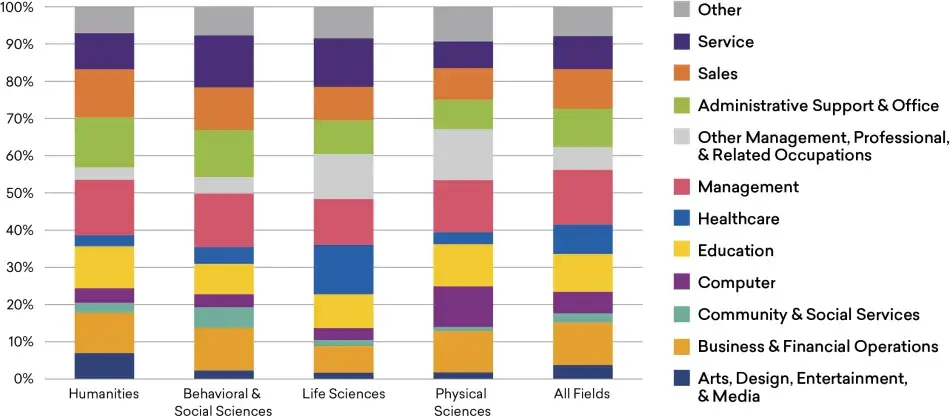Occupational Distribution of Terminal Bachelor’s Degree Holders, by Field of Bachelor’s Degree, 2018
Occupational Distribution of Terminal Bachelor’s Degree Holders, by Field of Degree, 20185

Also shaping perceptions about the value of humanities degrees is the sense that graduates from the field are less likely than other graduates to be prepared for a variety of occupations, a belief encapsulated in the stereotype of humanities majors as baristas and reflected in pressure on college provosts “to focus on academic programs that have a clear orientation toward careers.”6 Contrary to the stereotype, humanities graduates—even those without advanced degrees—are widely distributed across occupational categories, similar to college graduates generally and those from the science disciplines.7 This report will offer a closer look at where humanities graduates find work, as well as their satisfaction with those jobs